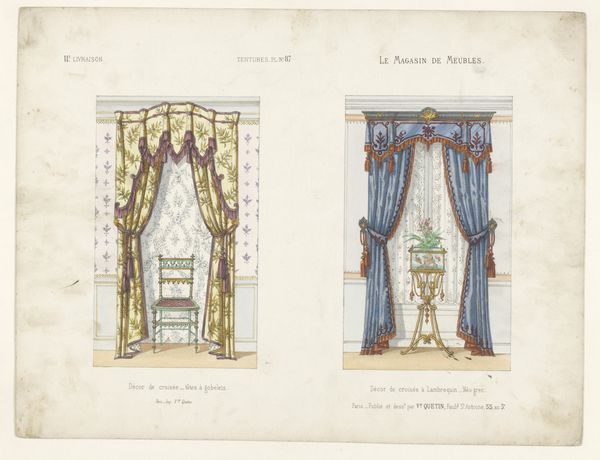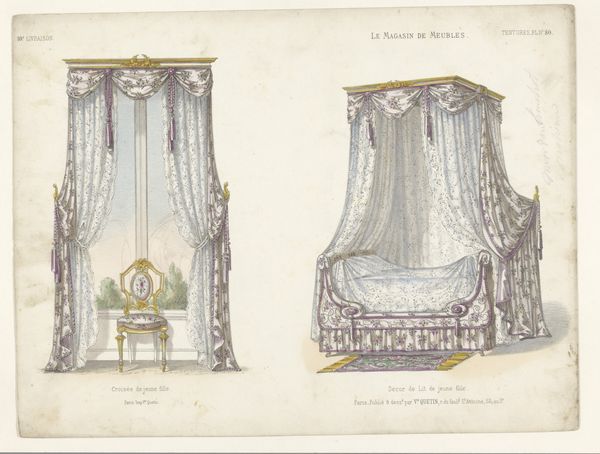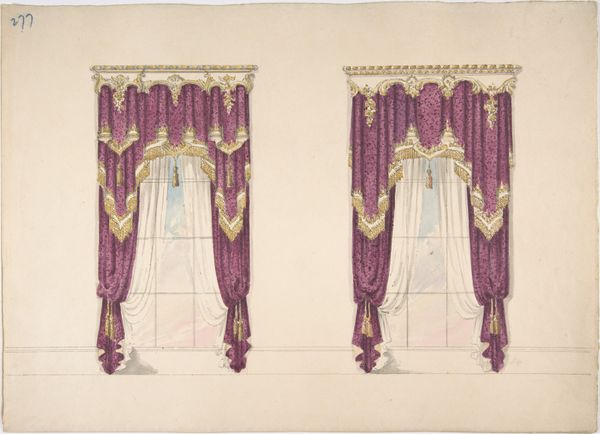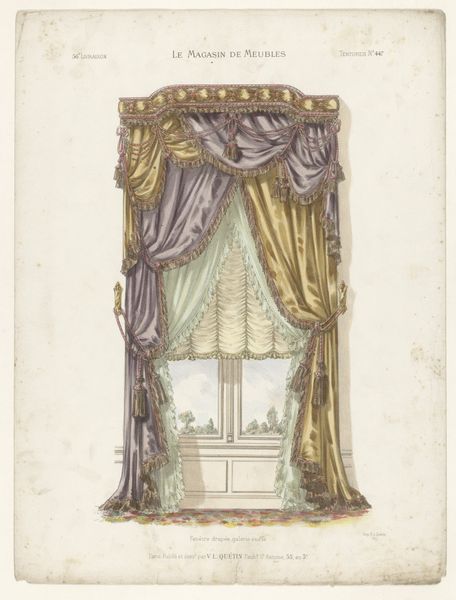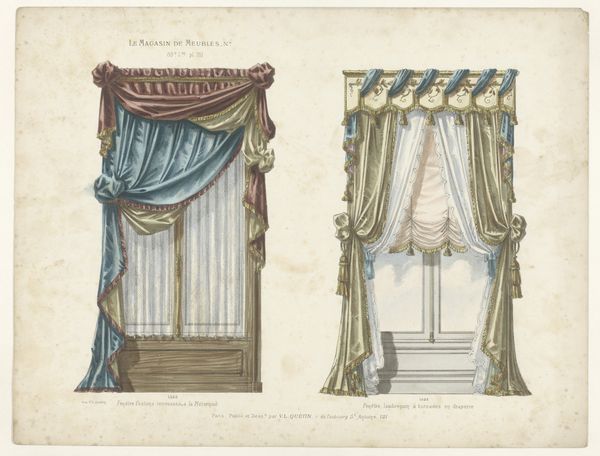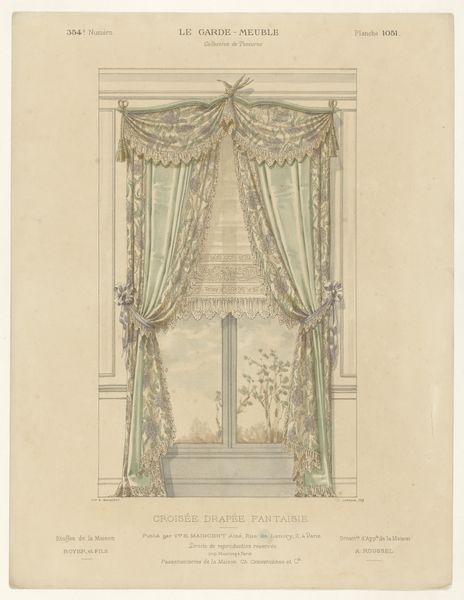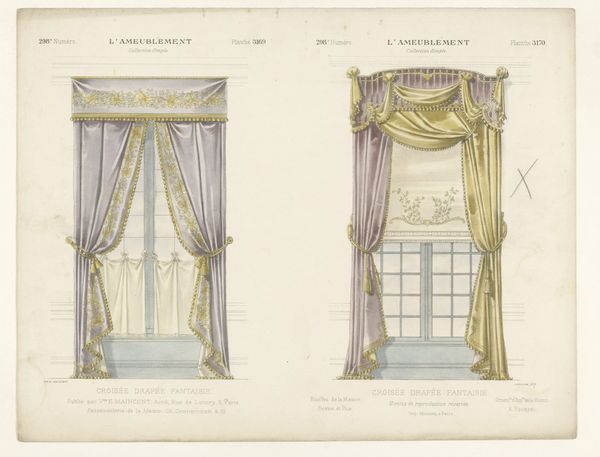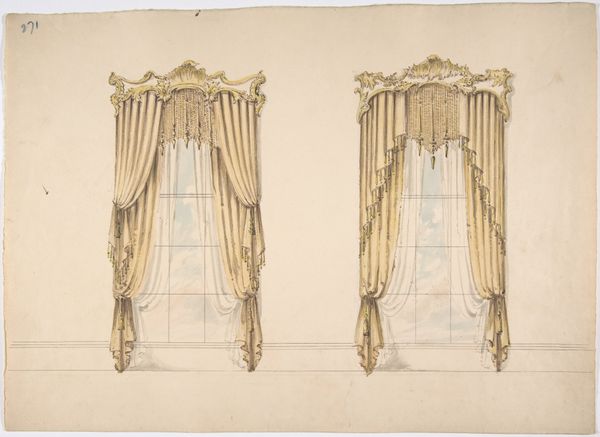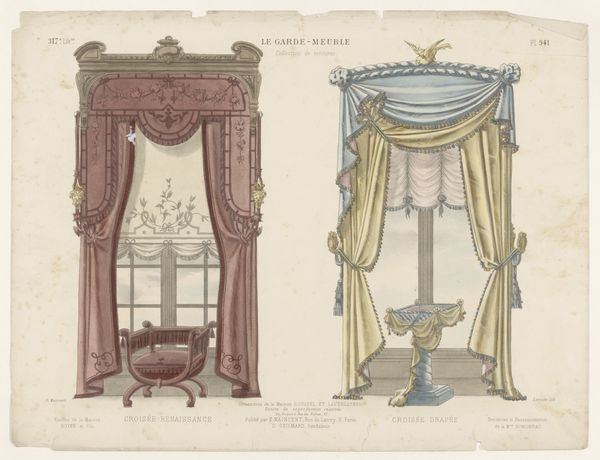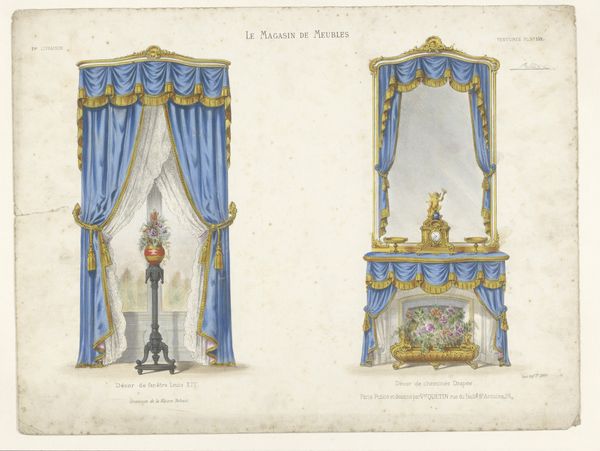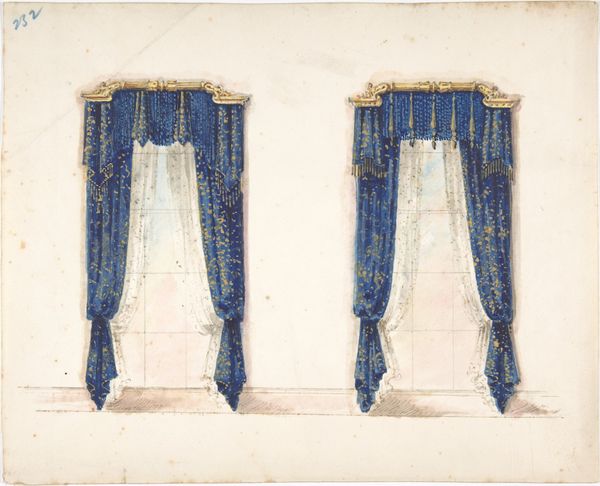
drawing, paper, watercolor
#
drawing
#
neoclacissism
#
water colours
#
paper
#
watercolor
#
coloured pencil
#
decorative-art
#
watercolor
Dimensions: height 272 mm, width 356 mm
Copyright: Rijks Museum: Open Domain
Curator: This delicate sheet features two watercolor and colored pencil renderings on paper. We believe this piece, called "Deur en venster met gordijnen," dates from sometime between 1832 and 1877. Editor: It's undeniably ornate, isn't it? All those flourishes and precise details. It evokes a very specific era, dripping in the aesthetics of luxury. Curator: Indeed. You're likely responding to its clear Neoclassical influences. The symmetry, the swags of flowers…all signifiers of that visual vocabulary. It presents door and window treatments; very architectural. Note how the motifs reference the classical world while being applied to what would have been considered modern interior decoration. Editor: It makes me consider the power dynamics inherent in design. Who was able to afford these elaborate embellishments? Who designed and made them? These images act as tiny documents of social history. Curator: Absolutely. Moreover, consider the semiotics of the individual motifs. The abundance of flowers, for instance, what emotional impact did they hold, or the symbolic associations people made. It would be interesting to examine them within the period’s broader symbolic language. How does that vocabulary echo through the present? Editor: Looking at these carefully rendered textiles makes one wonder what role drawings such as this served at the time. Was this intended as a design catalogue, showcasing different styles to wealthy clients? Perhaps these drawings offered aspirations of luxurious living to a broader public, as a carefully controlled demonstration of opulence and style? Curator: Those are very insightful observations. And if we look closer, the drawings provide evidence of an evolving consumer culture during the period and its potential role in shaping personal identities. In other words, what statement would the window coverings shown in the right half of the artwork make, when compared to the design featured on the left? Editor: Thank you, that’s made me re-evaluate my initial perception, now I see these aren’t just pretty pictures—they are windows into understanding a very specific historical and cultural viewpoint. Curator: Agreed. By examining not only the aesthetic elements, but also the work's societal role, we glean valuable insights.
Comments
No comments
Be the first to comment and join the conversation on the ultimate creative platform.
